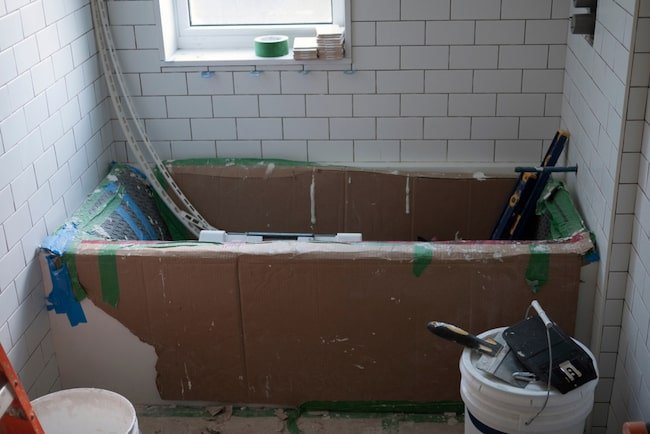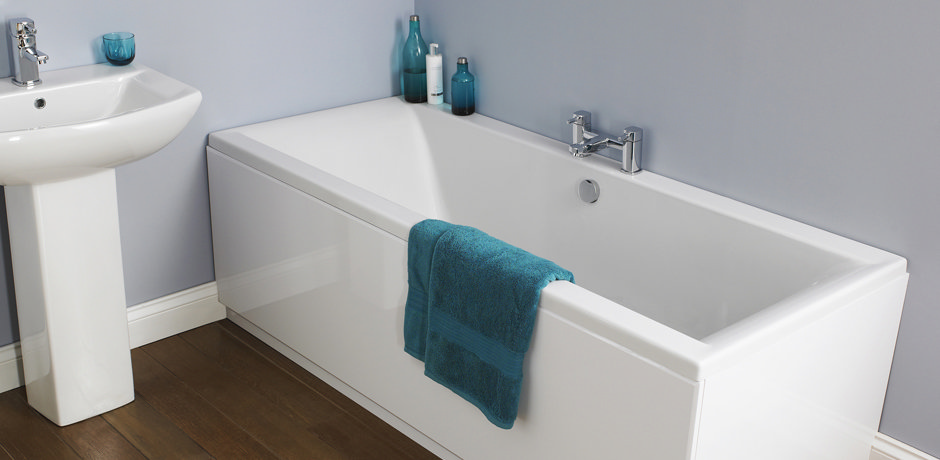Just How to Install a Bathtub Yourself
Just How to Install a Bathtub Yourself
Blog Article
They are making a number of great pointers relating to How to Install a Bathtub Yourself overall in this great article following next.

Mounting a bathtub isn't precisely brain surgery, yet it does require solid plumbing, woodworking, and also in some cases, tiling skills. Replacing an old bathtub with a new one is also a moderately difficult project. If the old bathtub is conveniently obtainable, the task can relocate immediately; if you have to open a wall to eliminate the old tub as well as position the new bath tub, the job is a lot harder. In either case, the task is within a home handyman's skills, although you will need a helper to leave the old bathtub and also embeded in the brand-new one. Make sure you have qualified yourself for the job as well as are comfortable trying it. As opposed to employing a professional to take over a halfway-completed project, it is far better to consider using one prior to you begin. Chances are you might need a professional plumber to make tube connections.
This post will certainly help you install a new bath tub in your washroom if you have actually already purchased a new bathtub as well as don't need to transform the setup of your previous water system pipelines.
Your tools and product list should consist of the following:
Removing Old Taps
If you require to replace old taps with brand-new ones as a part of your setup, then the first thing you should do is separate the water system. After doing so, switch on the faucets to drain pipes any type of water remaining in the system. The procedure of removing the existing taps can be fairly problematic due to the restricted accessibility that is frequently the situation.
Use a basin wrench (crowsfoot spanner) or a faucet device to undo the nut that links the supply pipelines to the taps. Have a towel prepared for the remaining water that will certainly come from the pipelines. Once the supply pipelines have been removed, utilize the same device to loosen the nut that holds the faucets onto the bath/basin. You will require to stop the solitary taps from turning during this process. Once the faucets have actually been eliminated, the holes in the bath/basin will have to be cleansed of any type of old securing compound.
Before carrying on to fit the new faucets, compare the pipeline connections on the old faucets to the new faucets. If the old taps are longer than the brand-new taps, then a shank adapter is needed for the new faucets to fit.
Fitting New Touches
If the tails of the new faucets are plastic, then you will certainly need a plastic connector to stop damage to the string. One end of the connector fits on the plastic tail of the faucet and the other end gives a connection to the current supply pipes.
If you require to fit a monobloc, then you will certainly require decreasing couplers, which links the 10mm pipe of the monobloc to the common 15mm supply pipeline.
Next, place the faucet in the installing opening in the bath/basin ensuring that the washing machines are in place between the faucet and the sink. Protect the faucet in position with the producer supplied backnut. As soon as the tap is safely in position, the supply pipes can be linked to the tails of the faucets. The faucets can either be connected by using corrugated copper piping or with typical faucet connectors. The former kind needs to be connected to the tap finishes first, tightening only by hand. The supply pipes can later on be connected to the other end. Tighten up both ends with a spanner after both ends have actually been attached.
Installing the Bathtub
Utilizing both wooden boards under its feet, place the tub in the needed placement. The wood boards are handy in evenly spreading the weight of the tub over the location of the boards as opposed to focusing all the weight onto four little points.
The following objective is to make certain that the bathtub is leveled all round. This can be achieved by examining the level and also adjusting the feet on the tub up until the level reviews degree.
To mount taps, fit the bottom of the furthest flexible tap port to the proper supply pipeline by making a compression sign up with; after that do the same for the other tap.
Switch on the supply of water as well as inspect all joints and also brand-new pipework for leakages and also tighten them if essential. Fill up the tub and also check the overflow outlet and the typical outlet for leaks.
Ultimately, fix the bathroom paneling as defined in the supplier's user's manual. Tiling and also securing around the bath tub must wait up until the tub has been utilized a minimum of once as this will settle it into its last setting.
Getting ready for the Setup
First of all, the supporting structure provided with the bath ought to be fitted (if required) according to the manufacturer's instructions. Next off, fit the faucets or mixer to the tub. When fitting the tap block, it is essential to make sure that if the tap features a plastic washing machine, it is fitted in between the bath and the taps. On a plastic bathroom, it is additionally practical to fit a sustaining plate under the faucets device to stop pressure on the tub.
Fit the adaptable tap connectors to the bottom of both faucets utilizing 2 nuts and olives (sometimes provided with the bathtub). Fit the plug-hole electrical outlet by smearing mastic filler round the sink electrical outlet hole, and then pass the electrical outlet with the hole in the bath. Use the nut provided by the maker to fit the plug-hole. Analyze the plug-hole electrical outlet for an inlet on the side for the overflow pipeline.
Next, fit completion of the versatile overflow pipeline to the overflow outlet. Afterwards, screw the pipe to the overflow face which should be fitted inside the bathroom. Ensure you use every one of the supplied washers.
Attach the trap to the bottom of the waste electrical outlet on the tub by winding the thread of the waste electrical outlet with silicone mastic or PTFE tape, and also screw on the trap to the electrical outlet. Connect all-time low of the overflow tube in a similar manner.The bathroom must currently prepare to be fitted in its last position.
Tiling Around the Tub
In the area where the bathroom fulfills the tile, it is essential to secure the joins with a silicone rubber caulking. This is important as the installation can move sufficient to break a rigid seal, triggering the water to penetrate the wall surface between the bath and the tiling, causing problems with wetness as well as possible leakages to the ceiling below.
You can pick from a variety of coloured sealers to blend in your components as well as installations. They are offered in tubes and also cartridges, as well as can sealing voids as much as a size of 3mm (1/8 inch). If you have a larger space to fill, you can load it with twists of drenched paper or soft rope. Keep in mind to always fill up the bath tub with water before securing, to permit the movement experienced when the bathtub remains in use. The sealer can fracture rather early if you do not take into consideration this movement before securing.
Conversely, ceramic coving or quadrant tiles can be utilized to edge the bath or shower tray. Plastic strips of coving, which are easy to use as well as reduce to size, are likewise easily offered on the market. It is suggested to fit the tiles utilizing waterproof or waterproof adhesive as well as cement.
Bathtub Installation
How Important Is A Bathtub To Your Home?
High-quality baths, showers, and other bathroom updates are necessary when considering a smart investment in your home. It’s a room that you go to every day and one that is constantly being used by guests.The bathroom is one of the top trafficked rooms in a home and also one of the most valuable in terms of home resale.
Install Piping Before Tub
You will be using your existing drain and waste vent system, but pipes required include the hot and cold water supply lines and a pipe leading to a shower head. A mixing valve and shower head are also needed. Air chambers may be required.
Position the Tub
Lower the tub into place so that the continuous flange fits against the wall studs and rests on 1’x4' or 2’x4' supports. Anchor the tub to the enclosure with nails or screws inserted through the flanges into the studs.
NOTE: Remember, bathtubs and shower stalls may require support framing. A bathtub filled with water is extremely heavy, so check building codes and framing support before installing the tub.
Assemble Drain Connections
Assemble the bathtub drain connections by connecting the tub overflow with the tub drain above the trap, not beyond it. The trap will have a compression fitting that screws over the arm of the overflow assembly.
Place a Pipe For the Shower Head
First, locate a brass female threaded winged fitting and attach it to a framing support via a screw or a nail. Then run a pipe up the wall for the shower head. Sweat or solder the other side of the brass fitting to the top of the pipe.
Attaching Hot and Cold Water Lines
Attach your water lines for both hot and cold by sweating these directly into the hot and cold ports of the mixing valve. The mixing valve will be how water enters the tub’s system, not by the pipes themselves.
Install the Spout
Extend a piece of 1/2 inch pipe, or whichever length is specified in the manufacturer’s instructions, for the tub spout. Sweat on a male threaded fitting at the end of the pipe or use a brass nipple of the proper length and a 1/2 inch cap.
NOTE: At this point you should have your rough-in plumbing work inspected before proceeding further.
Check For Leaks
Restore the water pressure and check the drain connection and the supply pipes for any sign of leaking.
estore the Bathroom Wall
Replace the wall with moisture-resistant drywall as a base for your wall covering. Seal the joints between the wall and your new tub with silicone caulk as protection against water seepage.
https://www.berkeys.com/2016/12/02/bathtub-installation-dallas/

I ran across that page about How to Install a Bathtub Yourself while doing a lookup on the web. Appreciated our post? Please share it. Let other people locate it. Thanks a lot for going through it.
Book
Report this page